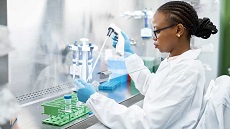
Genetic toxicology has seen many advances over the years to bring a standard battery of genotoxicity assays and the application of computational toxicology to regulatory safety testing. This supports and reduces the need for animals in testing and human clinical trials while ensuring drug and chemical safety.
Genetic toxicology uses high-throughput screening technologies to provide accurate, reliable and cost-effective identification of toxicity for industrial chemicals and pharmaceutical and cosmetic products.
Genetic toxicology has established a wealth of assays and techniques that detect damage to genetic materials through the reliable establishment, evaluation and refinement and the mechanisms to identify issues early in the development process. Thus, offering insight into the repair of such damage in various prokaryotic and eukaryotic cells and organisms.
Overcoming challenges
Testing relies on a standard battery of Ames bacterial mutagenesis through mammalian in vitro and in vivo genotoxicity assays offered by contract research organisations such as Gentronix. Genotoxicity testing provides reliable prediction and detection. Yet, it brings persistent challenges for interpretation in human health risk assessment that computational toxicology and high throughput in vitro testing can overcome more efficiently and cost-effectively than standard in vivo technology.
Traditional cancer bioassays require extensive use of mice and rats and multiple histopathological examinations, which are incredibly low-throughput, costly and time-consuming. Yet we know that many of the chemicals classified by IARC as carcinogens are genotoxic or mutagenic across short-term testing and induce multiple tumours in rodents.
Advances in genetic toxicology mean that the current genotoxicity test battery enables simple, quick and inexpensive hazard identification by assessing chemically induced genetic damage.
Mechanistic advances
New technologies enable more significant mechanistically based biological associations within cellular systems, genomic response and human carcinogenicity. The use of computational prediction is based on biological attributes, chemical structure and proven values within application boundaries.
Affordable and informative high-throughput broad-based toxicity profiling
Predictive toxicology requiring low test item volumes provides a means to detect and contextualise genotoxic liabilities early in drug and chemical development stages, which can be used to address chemical safety for regulatory approval.
Flow cytometry and skin toxicology without a requirement for costly animal testing allow highly reproducible, cost-effective and fast assessments of dermal toxicology and diverse endpoint delivery. Advances in genetic toxicology have enhanced the ability to analyse, understand and guide the navigation of the regulatory requirements and manage adverse toxicology findings.
Computational toxicology programs
Predictive genetic toxicology models can be based on a vast library of chemicals and individual records to create QSAR models based on different genetic toxicity tests and combined rodent carcinogenicity predictions. This informs the development of a paradigm to use more than one computational toxicology program result of more than one endpoint to report and analyse the results with meta-analysis to give the best overall predictions.
Pharmaceutical pipelines use in silico genotoxicity predictions to aid drug discovery, including virtual screening and prioritisation of compounds for biological testing, to conserve testing resources for those with the best chance of a future.
Over recent years, genotoxicity investigations have provided essential insights into the carcinogenicity and early identification of potential carcinogens. These assays are now considered sufficiently robust to assess mutagenesis and provide confident results of the genotoxicity of a chemical—an advance supporting the reduction of animals used in testing.
Related posts:






